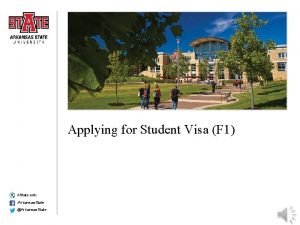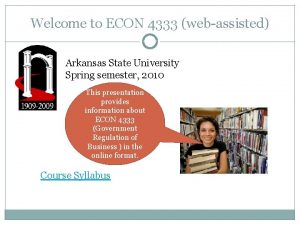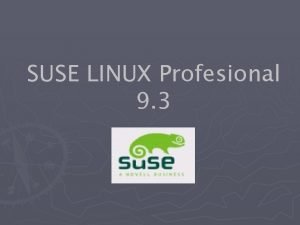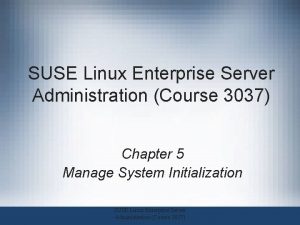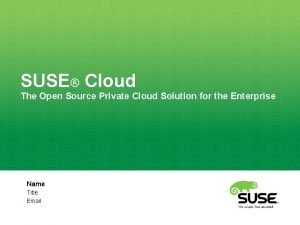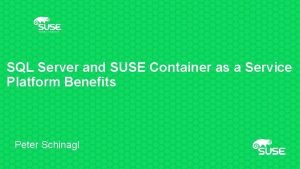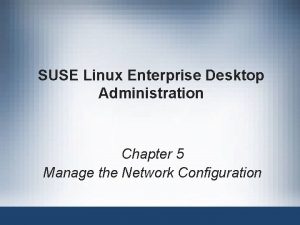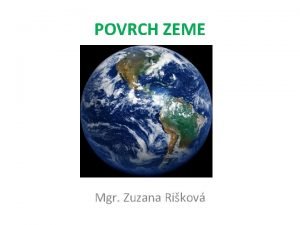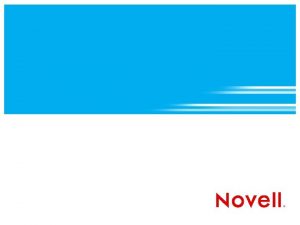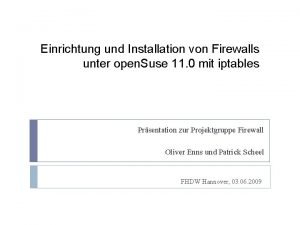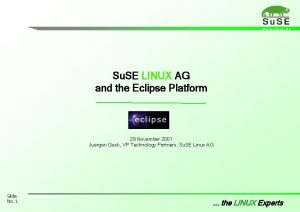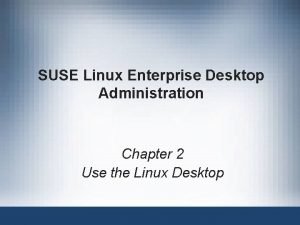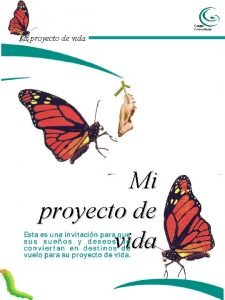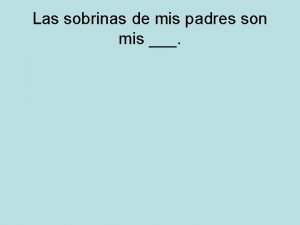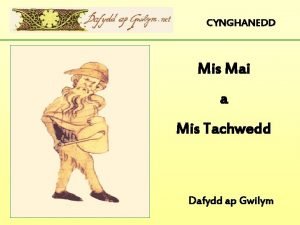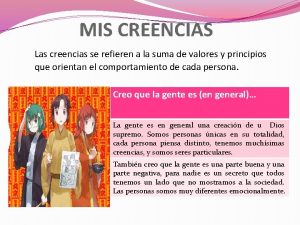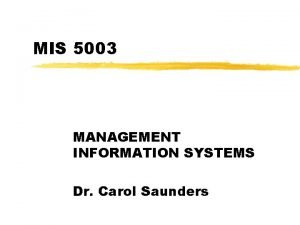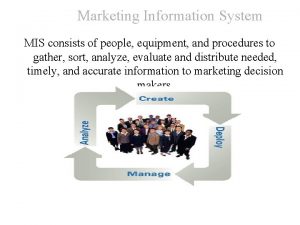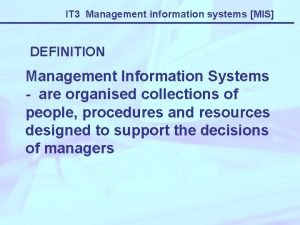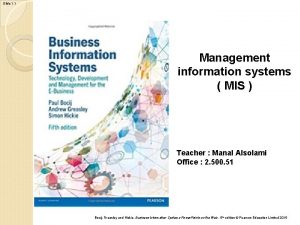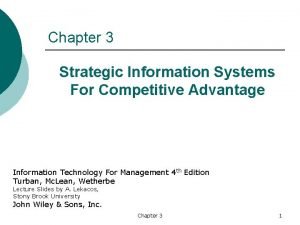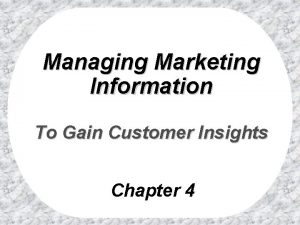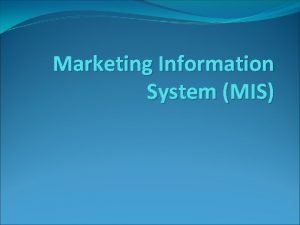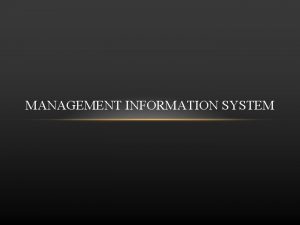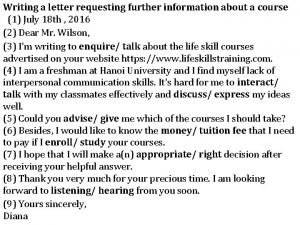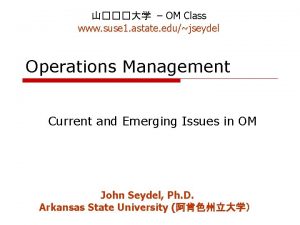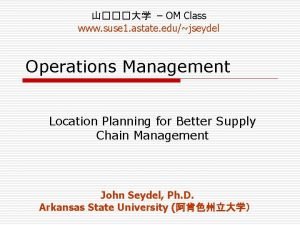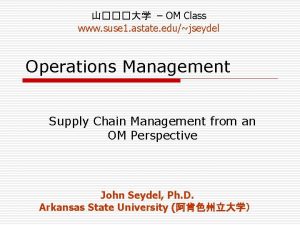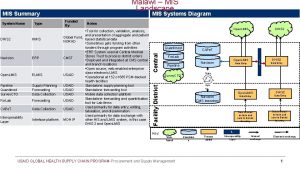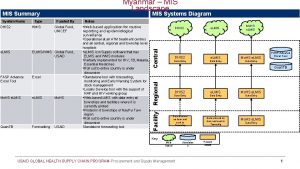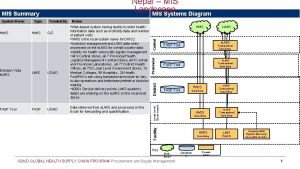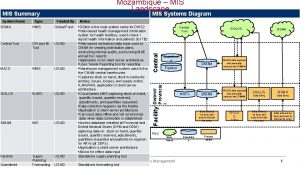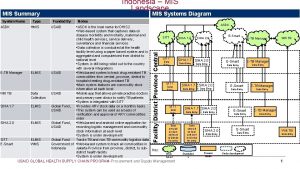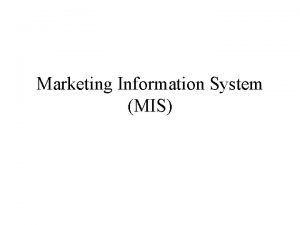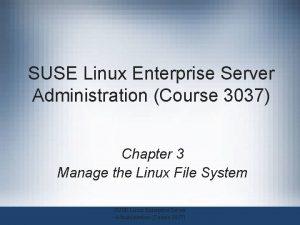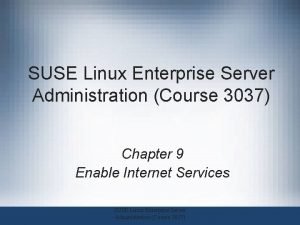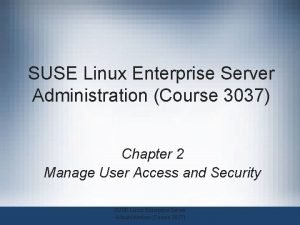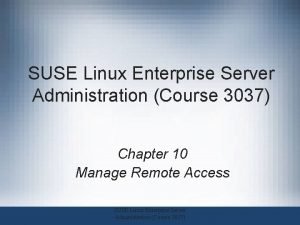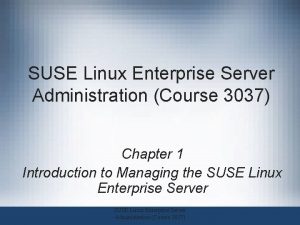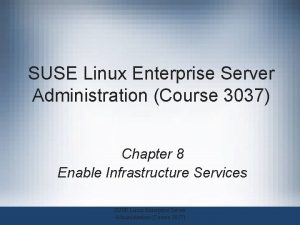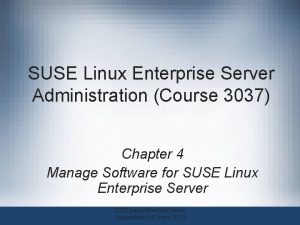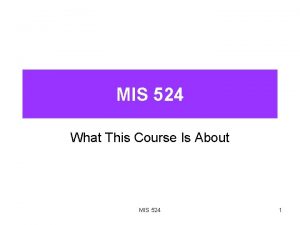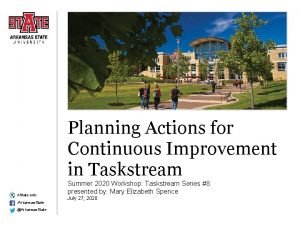MIS Course www suse 1 astate edujseydel Information






























- Slides: 30

山���大 学 – MIS Course www. suse 1. astate. edu/~jseydel Information Systems Design Approaching MIS from an American Perspective (Draft) John Seydel, Ph. D. Arkansas State University (阿肯色州立大学)

Overview o o IS concepts CIT program at a. State Teaching aspects MIS in practice and in the classroom in the US

Information Systems Concept o What are the components of information systems (IS)? n Any IS, even back to the Neanderthal days : o Data o People o Procedures n Computer-based IS: o Hardware o Software o Consider: n Procedures are to people as n Software is to hardware

A Schematic Overview of the Technology Aspect of IS

Apps (i. e. , the Software Component)

A Closer Look at the People Component o In general n End users n IT/IS personnel o End users: people for whom systems are designed to support what they do n Basic associates (e. g. , carpenters, clerks, etc. ) n Knowledge workers (e. g. , engineers, nurses, faculty, etc. ) n Managers o IT/IS personnel: people who design, develop, and support the technology and systems n n Applications development (programmers) Operations (e. g. , support personnel) Network technicians Management (e. g. , analysts, planners, etc. )

How Can We Use this Five-Component Framework?

About the MIS Course o Now, consider the course title: Management Information Systems o OK, so what is management? o Now, what is a system? o We will come back to information later

First, Some Basic Business Concepts o Consider the three functional areas of any business; what are they? o These involve: n What it does ______ ? n The people it serves ______ ? n Dealing with the money ______ ? o Where do these “functions” fit? n n n Accounting Sales Human Resources Engineering. . . IT/IS

IT Impact on Business Operations o Organizations typically operate by functional areas or functional silos o Functional areas are interdependent o IT serves to integrate these functional areas

Information Technology Value

People, Information, and IS o Data: raw facts that describe the characteristic of an event o Information: data converted into a meaningful and useful context o People use n Information technology to work with n Information

MIS (CIT) Curriculum at a. State (a)

MIS (CIT) Curriculum at a. State (b)

MIS (CIT) Curriculum at a. State (c)

MIS (CIT) Curriculum at a. State (d)

MIS (CIT) Curriculum at a. State (e)

Tying Curriculum to MIS Practice (a)

Tying Curriculum to MIS Practice (b)

MIS Curriculum at a. State and the US in General o Business degree n General education (e. g. , Math, Science, Literature, History, . . . ) n Business concepts (e. g. , Accounting, Marketing, Finance, . . . ) n IT/IS coursework (e. g. , Programming, Networking, Database, . . . ) o Continually adjusting per industry practices n Advisory board n Faculty experience n Credit for certifications

Teaching Aspects: The Value of Faculty Experience o What are faculty members doing: teaching or relaying? o Consider some IT/IS courses n n MIS Programming Project Management Others. . . ? n n n Extensive training/education in that subject Industry experience in that area Read the book/chapter (last week!) o OK, so what qualifies a faculty member to teach a particular subject? o How about o Consider AACSB’s requirement: AQ (i. e. , academic research) o Maybe there’s a better way. . .

Case Study: My Time at Acxiom o Acxiom – a very large IT/IS firm n The biggest company you never heard of n BI and data services to Fortune 500 firms o Spring 2010: adding value with both high level and entry level work n Worked on development of largest Acxiom project ever o Software engineering: member of portal design team o Programming: building functionality from existing components n Member of development team for upgrade of Acxiom’s self-service web portal

Constituents and Benefits of Faculty Experience o Faculty member n n n Exposure to what’s really happening Gain new skills Bring valuable perspectives into classroom Identify potentially fruitful avenues for research Build relationships with professionals n n n Free labor New insights and “expertise” Build relationships with academia (recruiting, research) n n n Curriculum development Reputation enhanced (or hampered? ) Build relationships with industry n n Learn from someone with “experience” Build relationships with potential employers o Acxiom o a. State o Students

Instruuctional Methods and Culture o Refer to CIT 3013 n Syllabus n Resources page n Homework pages (A and B) o Note: n Power. Point outlines, Tegrity recordings, cases, exercises, examples n Grading components n Class discussions n Teamwork n Online support o Primary website o My. MISLab o Blackboard n Office hours o F 2 F o Virtual

Summary: MIS Curriculum at a. State (and the US in General) Practice of MIS and curriculum work together to prepare students for rapidly changing work environments o Business degree n General education (e. g. , Math, Science, Literature, History, . . . ) n Business concepts (e. g. , Accounting, Marketing, Finance, . . . ) n IT/IS coursework (e. g. , Programming, Networking, Database, . . . ) o Continually adjusting per industry practices n Advisory board n Faculty experience n Credit for certifications

Appendix




 Www.astate.edu
Www.astate.edu Blackboard astate
Blackboard astate My.astate.edu
My.astate.edu Suse linux 9
Suse linux 9 Suse linux administration
Suse linux administration Private suse server
Private suse server Suse container platform
Suse container platform Suse linux remote desktop
Suse linux remote desktop Korintský prieplav
Korintský prieplav Suse expanded support
Suse expanded support Suse firewall
Suse firewall Suse.de
Suse.de Suse linux shutdown command
Suse linux shutdown command Que deseo proyecto de vida
Que deseo proyecto de vida La sobrina de mi madre es mi
La sobrina de mi madre es mi Mis mai a mis tachwedd
Mis mai a mis tachwedd Mis mai a mis tachwedd
Mis mai a mis tachwedd Mis actos son un reflejo de mis creencias
Mis actos son un reflejo de mis creencias English bond t junction elevation
English bond t junction elevation Course title and course number
Course title and course number Chaine parallèle muscle
Chaine parallèle muscle Data vs information in mis
Data vs information in mis Marketing information system mis
Marketing information system mis Examples of management information system
Examples of management information system Management information systems definition
Management information systems definition Quality of information in mis
Quality of information in mis Strategic information system advantages
Strategic information system advantages Using marketing information to gain customer insights
Using marketing information to gain customer insights Misمعنی
Misمعنی What is management information systems
What is management information systems Writing a letter asking for information
Writing a letter asking for information
